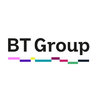
i
Aerial Telecom Solutions
Filter interviews by
Aerial Telecom Solutions Operations Maintenance Lead Interview Questions and Answers
Aerial Telecom Solutions Operations Maintenance Lead Interview Experiences
1 interview found
I applied via Walk-in and was interviewed before Feb 2022. There were 2 interview rounds.

(2 Questions)
- Q1. Work related questions and answers
- Q2. My family background
Interview Preparation Tips
Top trending discussions






Interview questions from similar companies

I applied via Naukri.com and was interviewed before May 2021. There were 2 interview rounds.

(1 Question)
- Q1. Fiber relative any questions
Interview Preparation Tips

Interview Questionnaire
2 Questions
- Q1. Wahi is the 4G parameters in kpi.
- Ans.
4G parameters in KPI are key performance indicators that measure the performance of a 4G network.
4G parameters in KPI include metrics such as signal strength, signal quality, throughput, latency, and handover success rate.
These parameters help assess the overall performance and quality of a 4G network.
For example, signal strength is measured in dBm and indicates the power level of the received signal.
Throughput measure...
- Q2. What is SINR.
- Ans.
SINR stands for Signal-to-Interference-plus-Noise Ratio, a measure of signal quality in wireless communication.
SINR is a ratio of the desired signal power to the interference and noise power.
It is used to evaluate the quality of a wireless signal in a given environment.
Higher SINR values indicate better signal quality and stronger signal-to-noise ratio.
SINR is commonly used in cellular networks to optimize network perf

I appeared for an interview before Sep 2016.
Interview Questionnaire
10 Questions
- Q1. Basic questions based communication
- Q2. Tell me about Ur work experience
- Ans.
I have over 5 years of experience working as a Noc Engineer in various IT companies.
Managed network operations and troubleshooting for large-scale networks
Implemented network monitoring tools to ensure network performance and security
Collaborated with cross-functional teams to resolve network issues quickly and efficiently
- Q3. What networking
- Ans.
Networking refers to the practice of connecting devices together to share resources and communicate with each other.
Networking involves the use of protocols and technologies such as TCP/IP, DNS, DHCP, and VLANs.
Common networking devices include routers, switches, firewalls, and access points.
Networking can be used for a variety of purposes, such as sharing files and printers, accessing the internet, and enabling commun...
- Q4. What is a OSPF and explain stages
- Ans.
OSPF is a routing protocol used in computer networks to determine the best path for data to travel.
OSPF stands for Open Shortest Path First
It is a link-state routing protocol
OSPF routers exchange information about the network topology to determine the best path for data to travel
There are several stages in OSPF: neighbor discovery, database synchronization, and route calculation
OSPF uses a hierarchical structure with a...
- Q5. Ospf administration count
- Q6. VLAN and intervlan different,
- Q7. Which place are use intervlan
- Q8. Same particle test
- Q9. Same subneting questions
- Q10. Disease salary
Interview Preparation Tips
Experience: This round simple
Round: Technical + HR Interview
Experience: I am example one by one but difficult in IP conspt
Round: HR Interview
Experience: He is give good salary so I am accept
Skills evaluated in this interview

Interview Preparation Tips

I applied via Company Website and was interviewed before Nov 2020. There was 1 interview round.
Interview Questionnaire
1 Question
- Q1. 1.self introduction 2.say something in your regional language 3.are you comfortable with all the parameters
Interview Preparation Tips

I applied via Walk-in and was interviewed in Oct 2020. There was 1 interview round.
Interview Questionnaire
1 Question
- Q1. Related to SAP and Formula in Excel
Interview Preparation Tips

I applied via Campus Placement and was interviewed before Nov 2021. There were 4 interview rounds.

Easy enough, anyone can crack with good logical skills
(1 Question)
- Q1. 1. Define CDMA. 2. What is HandShaking in telecom
- Ans.
CDMA is a wireless communication technology that allows multiple users to share the same frequency band simultaneously.
CDMA stands for Code Division Multiple Access.
It uses spread spectrum technology to allow multiple users to transmit data simultaneously.
Each user is assigned a unique code to differentiate their signal from others.
Examples of CDMA networks include Verizon and Sprint in the US.
HandShaking is a process ...
(1 Question)
- Q1. Define how your hobbies helps you to grow you?
Interview Preparation Tips

Interview Questionnaire
12 Questions
- Q1. LTE Architecture
- Q2. Interface between LTE
- Ans.
Interface between LTE refers to the connection between the LTE network and other networks or devices.
LTE interfaces with other cellular networks such as 3G and 2G through inter-RAT handover
LTE also interfaces with non-cellular networks such as Wi-Fi and Ethernet through evolved packet core (EPC)
LTE devices interface with the LTE network through the air interface using radio frequency signals
LTE also interfaces with cor...
- Q3. What is X2 interface
- Ans.
X2 interface is a communication interface between two eNodeBs in LTE network.
X2 interface is used for inter-cell handover and load balancing.
It is a point-to-point interface that connects two eNodeBs.
X2 interface is used for exchanging control and user plane data between eNodeBs.
It is a critical interface for LTE network performance and reliability.
X2 interface supports various protocols such as S1AP, GTP, and RANAP.
- Q4. Channels of LTE
- Ans.
LTE has 20 MHz bandwidth divided into 100 resource blocks. Each resource block has 12 subcarriers and 7 symbols.
LTE has 20 MHz bandwidth
Divided into 100 resource blocks
Each resource block has 12 subcarriers and 7 symbols
- Q5. KPI of LTE
- Ans.
KPIs (Key Performance Indicators) of LTE include throughput, latency, coverage, and call setup success rate.
Throughput measures the amount of data that can be transmitted over the network in a given time period.
Latency measures the time it takes for data to travel from the source to the destination.
Coverage measures the area where the network signal is available.
Call setup success rate measures the percentage of succes...
- Q6. What is CSFB?
- Ans.
CSFB stands for Circuit Switched Fallback, a technology that allows LTE devices to fallback to 2G or 3G networks for voice calls.
CSFB is used when a LTE device is unable to make a voice call over the LTE network.
It allows the device to switch to a 2G or 3G network for voice calls.
CSFB is a temporary solution until VoLTE (Voice over LTE) becomes more widely available.
CSFB can cause call setup delays and impact the user
- Q7. Why OFDMA technique used in LTE?
- Ans.
OFDMA is used in LTE to improve spectral efficiency and support multiple users simultaneously.
OFDMA allows for multiple users to share the same frequency band by dividing it into smaller subcarriers.
It also enables dynamic allocation of subcarriers to users based on their bandwidth requirements.
This results in better spectral efficiency and higher data rates.
OFDMA is also resistant to interference and fading, making it...
- Q8. Differentiate FDD & TDD
- Ans.
FDD and TDD are two different duplexing techniques used in wireless communication.
FDD stands for Frequency Division Duplexing and TDD stands for Time Division Duplexing.
In FDD, separate frequency bands are used for uplink and downlink communication, while in TDD, the same frequency band is used for both uplink and downlink communication.
FDD is used in technologies like 2G, 3G, and 4G LTE, while TDD is used in technolog...
- Q9. What is massive MIMO?
- Ans.
Massive MIMO stands for Massive Multiple Input Multiple Output. It is a wireless communication technology that uses a large number of antennas at the base station to improve network performance.
Massive MIMO uses a large number of antennas at the base station to improve network performance.
It can significantly increase the capacity and coverage of wireless networks.
It works by using spatial multiplexing to transmit mult...
- Q10. LTE Channels
- Q11. LTE Call Flow
- Q12. Type of Handover & its process
- Ans.
Handover is the process of transferring an ongoing call or data session from one cell to another.
There are two types of handover: Hard Handover and Soft Handover.
Hard Handover involves breaking the connection with the current cell before establishing a connection with the new cell.
Soft Handover involves establishing a connection with the new cell before breaking the connection with the current cell.
The handover process...
Skills evaluated in this interview

I applied via Walk-in and was interviewed before Jun 2021. There were 2 interview rounds.

(1 Question)
- Q1. Hr can ask salary and education experience and also why you want to do a job in Reliance Jio
Interview Preparation Tips
Aerial Telecom Solutions Interview FAQs
Tell us how to improve this page.
Aerial Telecom Solutions Interviews By Designations
- Aerial Telecom Solutions Data Entry Operator Interview Questions
- Aerial Telecom Solutions Assistant Project Manager Interview Questions
- Aerial Telecom Solutions Project Engineer Interview Questions
- Aerial Telecom Solutions SAP Fico Consultant Interview Questions
- Aerial Telecom Solutions NOC Engineer Interview Questions
- Aerial Telecom Solutions RF Engineer Interview Questions
- Aerial Telecom Solutions Executive Interview Questions
- Aerial Telecom Solutions Project Manager Interview Questions
- Show more
Interview Questions for Popular Designations
- Maintenance Engineer Interview Questions
- Mechanical Maintenance Engineer Interview Questions
- Electrical Maintenance Engineer Interview Questions
- Maintenance Manager Interview Questions
- Maintenance Supervisor Interview Questions
- Maintenance Fitter Interview Questions
- Maintenance Electrician Interview Questions
- Maintenance Executive Interview Questions
- Show more
Aerial Telecom Solutions Operations Maintenance Lead Interview Process
based on 1 interview
Interview experience
Interview Questions from Similar Companies
|
NOC Engineer
59
salaries
| ₹1.8 L/yr - ₹4 L/yr |
|
SAP SD Consultant
49
salaries
| ₹3.6 L/yr - ₹5.1 L/yr |
|
Data Entry Operator
47
salaries
| ₹0.9 L/yr - ₹2.3 L/yr |
|
Network Engineer
43
salaries
| ₹2 L/yr - ₹6.3 L/yr |
|
Project Coordinator
33
salaries
| ₹2.9 L/yr - ₹7.1 L/yr |

Jio

Vodafone Idea

Bharti Airtel

Ericsson
- Home >
- Interviews >
- Aerial Telecom Solutions Interview Questions >
- Aerial Telecom Solutions Operations Maintenance Lead Interview Questions











